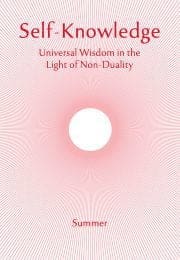The Non-Duality of Shri Shankara
Continuing H P Shastri’s essay on the Outline of the Advaita of Shri Shankara
The jiva
Like the world, jivahood (individuality) is an ultimate fact of our experience. Shri Shankara, in his descriptions of the genesis of the world, gives no hint as to the birth of the jiva. He says that the jiva is beginningless; it is not something that has come into existence but is an eternal existence which cannot be explained in terms of origin. He adds that we can truly describe the nature of jiva not in an individual sense but in the sense of Ishvara (the cosmic Overlord). According to Vedanta, the jiva is ultimately to be known as Truth; it is Selfhood (Atma-tattva). To realize the true nature of the jiva directly is the highest good of life. The seemingly individual jiva is realised as not different from the all-pervasive Atman; it is a phase of the infinite Self and one awakens to this fact in deep spiritual experience.
Shri Shankara insists on the identity of jiva and Brahman because both are sentient. The conception of two consciousnesses is a philosophical absurdity. Ultimately there can be only one sentience which is infinite and all-pervasive.
The limitations of our physical existence are not related in an intimate way with the infinitude of our spiritual Self. The nature of Self is independence, and independence means infinitude. In consciousness there is an element which is beyond all the objects of consciousness. In the awareness of individuality and limitations abides an infinite, all-pervasive spiritual element which is beyond all limits.
When Shri Shankara speaks of the nature of release (Moksha) he speaks of this fact. He does not call release ‘achievement’ but ‘the realization of Brahmanhood in the Self’. This realization is the knowledge of non-duality as the nature of the Self and from a certain point of view it is a mode (vritti) of the mind. Release is not a special state and it is realizable in this very life and in the life of jagat (the world). The whole discipline of Vedanta points to the fact that release is available to the individual. The assumption that nobody up to now has realized Moksha is without foundation.
Subscribe or enrol for free guest access to read all of this article and Self-Knowledge online.
Already subscribed or enrolled? Log in:


